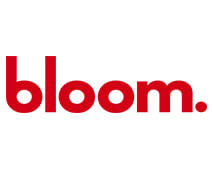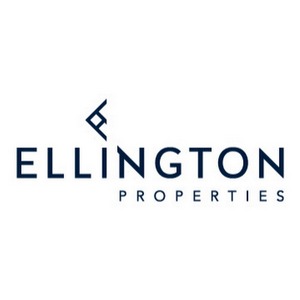
Despite several negative global trends, the real estate market in the United Arab Emirates has as a whole maintained and expanded on its 2021 success albeit in a more moderate form. This is largely caused by an increase in demand from overseas buyers seeking either a "safe haven" for their capital or a private residence.
In this article, we will examine the outcomes of 2022 with key indicators in the real estate markets of the UAE's two largest emirates, Dubai and Abu Dhabi.
Content:
- Dubai property market in 2022
- Real estate market in Abu Dhabi in 2022
- Housing market potential for the United Arab Emirates
Dubai property market in 2022
Activity on transactions connected to real estate in Dubai remained strong last year, with transaction volumes growing by 51% between January and November 2022 while transaction values rose by 55%, according to information provided by the digital platform Dubai Pulse.
Unconfirmed evidence suggests that the increase is primarily due to a 45% increase in demand from foreign buyers.
Let's take a closer look at the market's components.

Main price growth slows down
Property prices in Dubai continued to increase by 2.6% in the third quarter of 2022, marking the seventh consecutive quarter of price hikes; however, average prices remain 22% lower than their 2014 peak.
Villas continue to exceed expectations, with average prices going up by 1.9% in the third quarter to AED 1,350 (367.5%) per square metre - a 14.3% growth compared to the same period last year. As a result, villa prices are now 7.2% lower than their peak in 2014.
During the third quarter, apartment prices rose by 2.7% to around AED 1,130 ($308) per square metre. Despite an 8% increase in the last year, apartment prices are still 24.2% lower than in 2014.
According to this analysis, the continued dominance of demand for villas becomes more noticeable when compared to the early part of the COVID-19 pandemic. Since January 2020, prices for villas have risen by an average of 33.8%, while the sales price of apartments in Dubai has increased by a more modest 5.7%.
Villas still ride the wave of popularity
The city's most expensive neighbourhoods continue to have the highest-performing sub-markets. Villas in Palm Jumeirah continue to see the steepest price hikes, with average transaction prices exceeding AED 3,500 ($953) per square metre., up by 6.9% during the third quarter and outperforming the third quarter success in 2021 by 48.2%.
Average prices for Palm Jumeirah villas in Dubai have risen 79.8% since the pandemic started in January 2020. They are now 26% higher than peak levels in 2017. The villa sub-markets in Dubai are experiencing significant price increases, compared to the start of the pandemic.
The next best-performing area was Mohammed Bin Rashid City, which increased by 26.1% in comparison to the previous year.
Rising villa prices are being fueled by local buyers' desire for more space and privacy. Citizens from other countries, particularly affluent and wealthy individuals, were a sizeable group of buyers in this regard.
Like villas, condos in the city's most popular areas saw the highest price growth in the third quarter, with MBR City (10.3%) and Palm Jumeirah (8.2%) being first and second among these areas. Apartment prices in Dubai Hills Estate have climbed by approximately AED 1,600 ($436), or 19%, in the last year.
The elite housing sector enjoys high demand
The expansion of Dubai's main markets, such as Palm Jumeirah, Emirates Hills, and Jumeirah Bay, reveals even greater price growth than the main villa market. Key figures have risen 29% in the third quarter of 2022 alone, owing to a lack of new housing and a strong inflow of wealthy and affluent individuals focused on acquiring a second home.
Dubai's top-ranked districts are driving the rise in prices. This trend is a significant departure from the emirate's previous two market cycles when consumers preferred to buy-to-let or buy-to-resell units.
Palm Jumeirah, one of Dubai's most exclusive neighbourhoods, has seen home prices grow by more than triple since the pandemic began. Prices for premium residences in Dubai's best areas have grown by 89% in the last year.
The average price for the transaction in Dubai is AED 3,220 ($877) per square metre., making it one of the world's most affordable luxury housing markets.
Hype for ultra-lavish housing continues
2022 was a record year for home sales of over $10 million. In the first 9 months of 2022, 152 ultra-high-end home sales were negotiated, surpassing last year's record of 93 deals. Transactions were concluded mainly in three elite areas:
- Palm Jumeirah, AED 3,050 ($830) per square metre;
- Emirates Hills, AED 5,200 ($1,415) per square metre;
- Jumeirah Bay, AED 6,350 ($1,728) per square metre.
Despite strong demand, developers are not implementing new projects at a faster pace than in the past, and therefore further price increases will continue.
Apartment supply growth on the market
For developers, apartments continue to be the most popular type of housing unit. It is scheduled for 63,000 units to be put on the market by 2025, accounting for 77% of the total supply. 50% of the apartment supply will be sold in four key sub-markets:
- Mohammed bin Rashid City – 17,000 units;
- Business Bay – 8,000 units;
- Downtown Dubai – 6,000 units;
- Dubai Creek Harbor – 5,000 units.
Expanding rental market
Rental yields across all types of residential property remain stable at around 6.5%, supported by rising rents which keep pace with growing capital costs. Currently, the average annual rent in Dubai is AED 130,000 ($35,393).
Growth has been greatest at the top of the market, with Palm Jumeirah villa rentals up nearly 44% in the last year and nearly 92% since the pandemic. Rental rates in more affordable villa areas are rising at a similar rate. The Springs' average rent has risen by nearly 22% in the last year, while Arabian Ranches' has risen by 22.4%.
Furthermore, apartment rents skyrocketed by 27% year-on-year. With Palm Jumeirah (40%) being followed by Downtown Dubai (38%).
Overall, apartment rental rates were 11.7% higher than before the pre-covid recession, but still 22.7% lower than the previous market peak in 2015. Villas, on the other hand, have seen an increase in average rental rates of nearly 39% since the outbreak began, and are now only 3.9% below their previous peak in 2015.
Real estate market in Abu Dhabi in 2022
Abu Dhabi's home values grew by 2.1% in the third quarter, marking the fifth consecutive quarter of price increases but average prices are still 27.9% lower than their 2014 peak.
Villas perform better, with prices rising 1.7% in the third quarter to AED 840 ($229) per square metre, only 2.7% higher than the same period last year and 19.7% lower than the peak in 2014.
Apartment prices went up by 2.1% in the third quarter to AED 1,035 ($282) per square metre. Despite a 3% increase in the last year, apartments are still 27.9% lower than their 2014 peak.
A thorough analysis reveals that the gap in the prices of villas and apartments becomes even more pronounced when the values before and after the pandemic are compared. Since the first quarter of 2020, apartment prices have risen by only 2.1% on average, while villa prices have increased by 6.8%.
Another important factor to be considered in the increase of transaction activity may be the fact that prices have remained relatively stable for the majority of the last two years, giving buyers and investors confidence.
Between January and September, the Department of Municipalities and Transport (DMT) reported 58,290 transactions with a net worth of AED 13.3 billion ($3.6 billion), confirming a rise in transaction activity in the Abu Dhabi housing market.
Buyers continue to pay more attention to large houses and villas. People want more living space, as well as office and gym spaces in their homes. Those who cannot afford to purchase villas prefer bigger apartments. Similarly, wealthy and affluent owners are upgrading from small villas to roomy residences, which contributes to a strong sales performance in sub-markets such as Saadiyat Island, where villa prices have increased by 18.8% in the last year.

Home value growth in every direction
While home prices continue to rise in every direction, the most rapid increases appear at the top of the market. The price of an apartment per square metre in the Al-Raha Beach area is 3.7% higher than it was in the first quarter of 2020. Similarly, the island of Al Reem has seen a 4% increase since the pandemic started. Districts that are more accessible, such as Al Reef, are still struggling to recover to pre-COVID levels.
Prices for villas paint a slightly different picture. The market's upper and lower parts experience the most rapid growth. Prices for villas on Saadiyat Island have increased by 18.8% in the last year, and by 24.7% since the start of the pandemic.
Similarly, Al Reef villa costs have gone up by more than 17% since the pandemic began. Part of the reason for this unusual behaviour is that households are upgrading wherever possible while the middle market is declining.
Abu Dhabi developers do well on demand
According to rough estimates, approximately 15,000 units are currently under development and will be finished by 2026.
There are 6,300 villas and 8,700 apartments in this total estimated supply. It is expected that only four sub-markets will account for 80% of the new housing supply:
- Yas Island – 5,165 units;
- Al Reem Island – 2,980 units;
- Khalifa City – 2,024 units;
- Al Saadiyat island – 1,702 units.
In response to higher prices and increased demand for more affordable and luxurious villas, developers, such as Aldar Properties and Reem Hills Properties, launched new projects in the final weeks of December that will add 5,900 residences to Abu Dhabi's housing stock, with villas accounting for for 72% of the total.
Rent rates go down
Rentals for mid-range and elite villas are rising. Al Raha Beach and Saadiyat Island have seen the highest rent growth since the pandemic started, with changes of 22.6% and 26.5% respectively.
Even when compared to the previous year, Al Raha Beach villa prices have increased by 18.8%, while Saadiyat Island villas are now 7.9% more expensive than in the same period in 2021.
Apartment and villa rental rates fell by 0.3% and 1.3%, respectively, year-on-year. Villa rental rates, on the other hand, have returned to pre-pandemic levels. Apartment rents are still 7.3% lower than they were in January 2020.
Housing market potential for the United Arab Emirates
The astonishing lifestyle that combines sun, sea, and sand and offers the best areas of Abu Dhabi and Dubai, attracts mainstream overseas buyers. Demand for villas, as well as growing interest in premium properties, dominate coastal areas such as Abu Dhabi's Yas Island and Dubai's Palm Jumeirah.
Experts predict a 5-7% rise in real estate prices in Dubai and a 4% increase in Abu Dhabi in 2023.
Dubai's annual growth rate is expected to slow to 13.5% in 2023, but it will still be the highest compared to other major markets worldwide.
However, the basic concepts remain unchanged, and a return to solid growth will reassure both homeowners and investors.
The number of cash buyers is increasing and now accounts for roughly 80% of the total transaction value. An increase in interest rates will undoubtedly affect buyers who obtain mortgage financing to purchase a home. However, because Dubai's luxury housing market is dominated by cash buyers - a drop in demand is unlikely, despite the UAE's long-standing programme to mimic US fiscal policy.









































